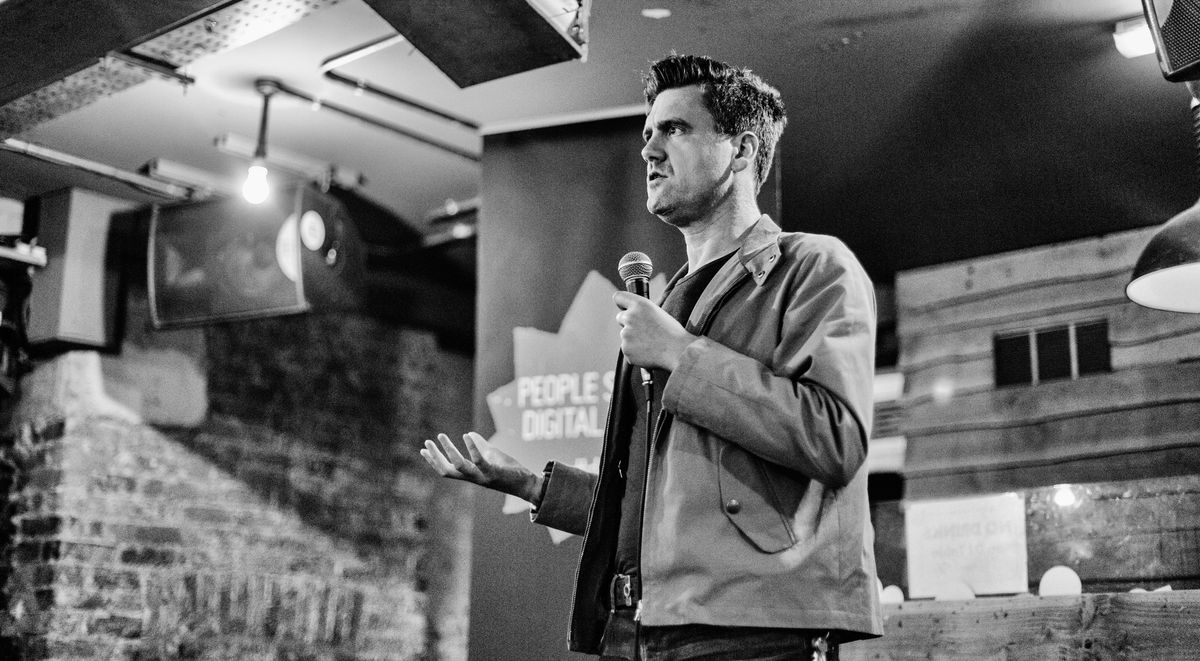
Tell a story that’s easy to understand a presentation tip
People like clarity. Whether it’s good news or bad. Use this tip to make sure that they understand you. By telling a story that they care about.
I often work with people who want to improve their public speaking skills. They want to come across as confident. And keep their audience engaged.
There’s a shortcut. It makes any presentation more effective. Without hours of exercises or rehearsals. It works for informal chats and official speeches. Team meetings and conference halls. From audiences of one person to one thousand.
People like clarity
This communication skill is based on a simple fact. People need clarity.
Don’t worry about whether they like what you have to say. Often, you can’t do much about that. Instead, make sure that they understand how it affects them. Tell them a story.
A quick way to improve any talk
First, prepare. Write down:
- Who your audience is. (Sometimes there’s more than one.)
- What they need to know about your topic. Three points max.
- What your role is, from their point of view.
Now follow these steps. Do this as soon as you get in front of people. Before you say anything else:
- Tell them who you are. Name, job title, where you work.
- Explain your role, from their point of view. “I see my role as…”
- Tell them what they need to know.
Leave a space here for your audience to react. Depending on the context, this could be a show of hands or Q&A. With a larger group, you might ask them to discuss in pairs. And then feed back to the group.
Now you can share whatever extra information didn’t fit in the previous structure. Like technical details or background. This tends to be less relevant to your audience. But they’ll be more willing to sit through it. Because you started with what matters to them. And gave them a chance to process it.
Example: sharing bad news
Imagine I need to tell a team something that they don’t want to hear. Like:
- management have cancelled their main project
- they need to change processes or cut costs
Here’s how I might use this tip. First I need to identify who I’m talking to. And how the news affects them. Let’s say some of them will need to move teams. Others will focus on different projects.
Now I can figure out what each group needs to know. For example:
- what management has decided and what is still unclear
- what each person’s options are (if any)
- timescales
Now I call the meeting. As soon as everyone’s sitting comfortably I say:
Hi everyone. As you know, I’m Jonathan from the Efficiency Unit at Head Office. I’ve called this meeting to share some news that will affect your team. I see my role as explaining what’s happening and answering your questions.
Next, I explain how the changes affect them:
Management have decided to reduce the research budget. This means that your team will spend less time exploring new ideas. And more time shipping products. It also means that two of you—Person A and Person B—will need to move to other teams. I realise that this won’t be welcome news and may come as a shock. I’m ready to answer your questions. And if I don’t know the answers I’ll find out.
Now I can ask for people’s responses. And provide space for them to process the news. As well as answering their questions. I might use active listening to understand their point of view.
After that I’ll show slides with other info. They’ll be more receptive to it because I started with what matters most to them.
How it works
This tip isn’t just for bad news. It works for any message, like:
- info that might not be relevant to everyone
- research findings
- progress updates on your project
It works by helping you tell a story that’s relevant to your audience.
Your goal isn’t sharing info. Or saying what you wanted to say. You could do these things by sending an email. Or recording a video.
Effective communication is two-way. You need to make your message easy to understand. By telling a story. And you need to provide space for your audience to react. Maybe they’ll give you feedback. Or ask questions. Or consider how they want to respond.
Get started
Often you can’t change the message. But you can deliver it in a different way. Take on the role of storyteller. With your audience as the hero. Try it! It’ll make you easier to understand.